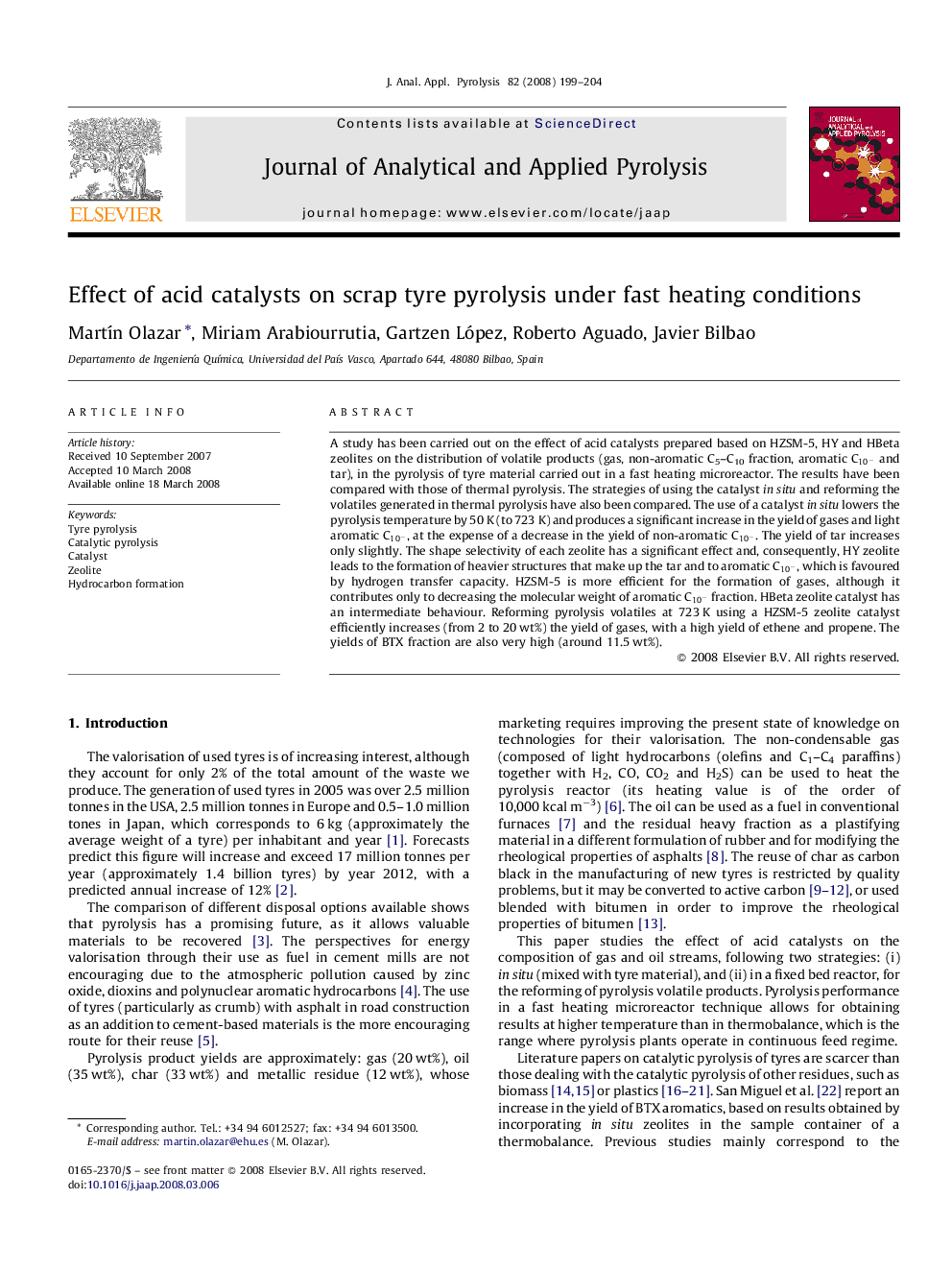| Article ID | Journal | Published Year | Pages | File Type |
|---|---|---|---|---|
| 1197264 | Journal of Analytical and Applied Pyrolysis | 2008 | 6 Pages |
A study has been carried out on the effect of acid catalysts prepared based on HZSM-5, HY and HBeta zeolites on the distribution of volatile products (gas, non-aromatic C5–C10 fraction, aromatic C10−C10− and tar), in the pyrolysis of tyre material carried out in a fast heating microreactor. The results have been compared with those of thermal pyrolysis. The strategies of using the catalyst in situ and reforming the volatiles generated in thermal pyrolysis have also been compared. The use of a catalyst in situ lowers the pyrolysis temperature by 50 K (to 723 K) and produces a significant increase in the yield of gases and light aromatic C10−C10−, at the expense of a decrease in the yield of non-aromatic C10−C10−. The yield of tar increases only slightly. The shape selectivity of each zeolite has a significant effect and, consequently, HY zeolite leads to the formation of heavier structures that make up the tar and to aromatic C10−C10−, which is favoured by hydrogen transfer capacity. HZSM-5 is more efficient for the formation of gases, although it contributes only to decreasing the molecular weight of aromatic C10−C10− fraction. HBeta zeolite catalyst has an intermediate behaviour. Reforming pyrolysis volatiles at 723 K using a HZSM-5 zeolite catalyst efficiently increases (from 2 to 20 wt%) the yield of gases, with a high yield of ethene and propene. The yields of BTX fraction are also very high (around 11.5 wt%).
